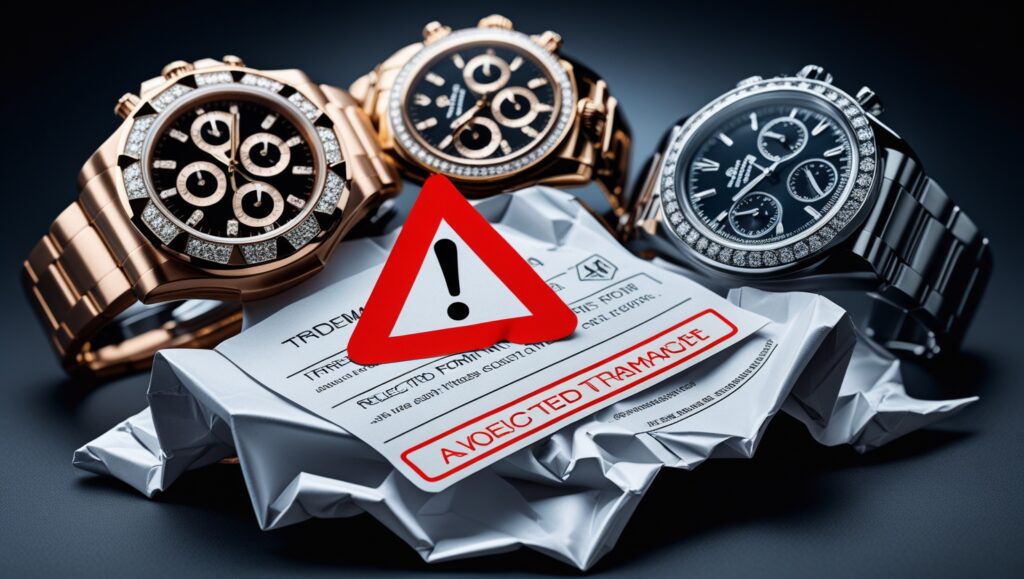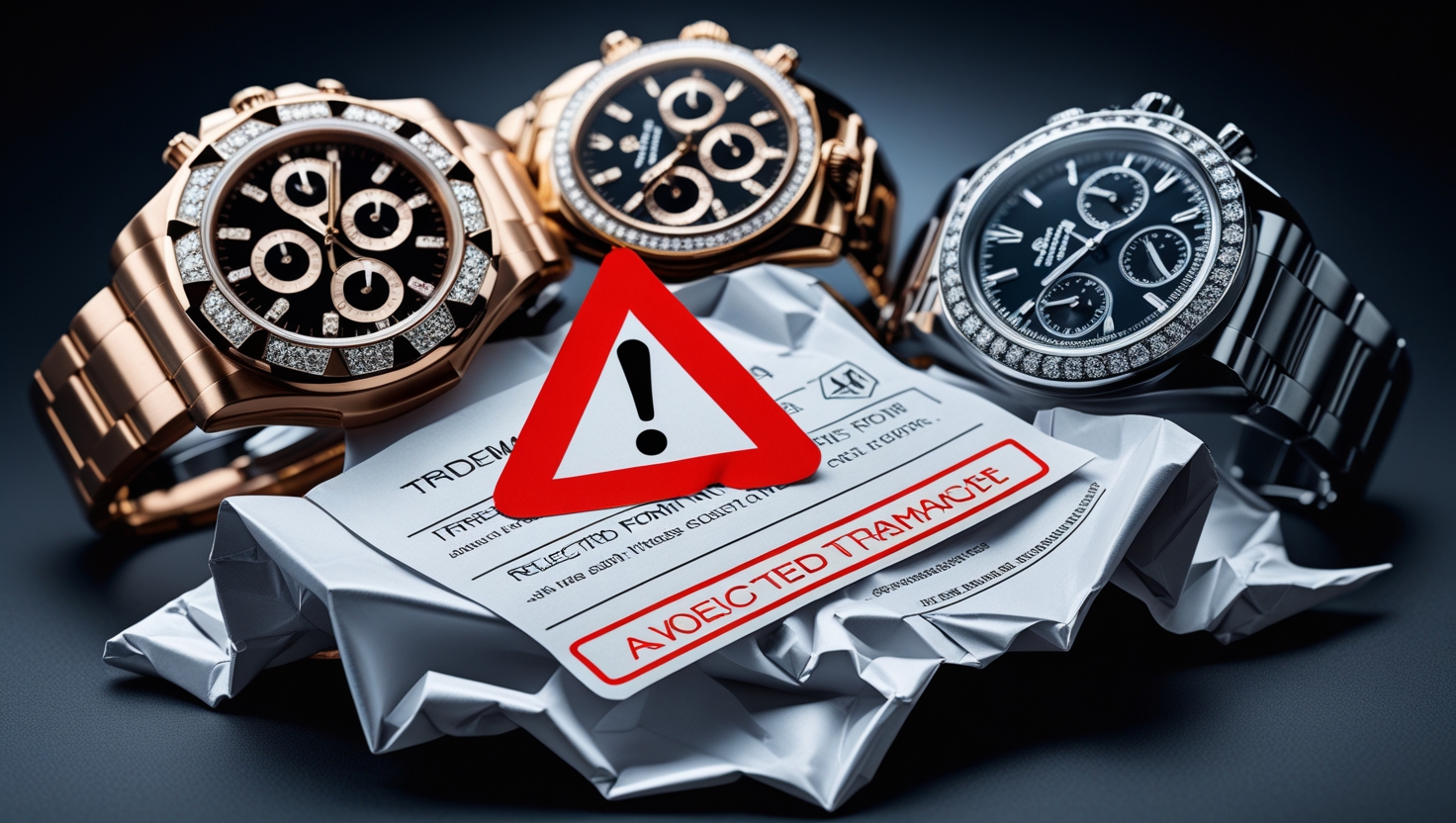Trademarking Jewelry & Watches? Don’t Make These 7 Class 14 Mistakes
Trademark protection can make or break your business’s future, especially in high-value markets like jewelry, gemstones, and horological items. Class 14 covers fine jewelry, precious metals, gemstones, watches, clocks, and related accessories. However, getting your application wrong can lead to costly delays, denials, or legal exposure.
Below, we uncover the seven most frequent mistakes businesses make in Class 14 trademark filings—and share how you can avoid them for a smooth and successful registration.

1. Skipping a Thorough Trademark Search
The mistake: Filing without searching thoroughly first.
Why it matters:
A basic name idea might already be in use. If your trademark is too similar phonetically, visually, or conceptually to an existing one—even in another region or slightly different class—it can be rejected or opposed.
Recommendation:
- Scrutinize the official trademark register under Class 14.
- Search not just exact names, but phonetic variations, alternative spellings, and auto-translated names.
- Check for logo similarities using shape or image searches.
- Include related classes like Class 9 (smartwatches) or Class 35 (retail) if you plan to expand.
A deep search ensures you don’t file a weak or infringing application.
2. Choosing a Generic or Descriptive Trademark
The mistake: Using brand names like “Gold Rings” or “Luxury Watches.”
Why it matters:
Trademark law favors distinctive over descriptive marks. Weak trademarks are harder to defend and often rejected.
Recommendation:
- Opt for invented words (e.g., Aureliq), suggestive phrases (e.g., GemAura), or abstract combinations.
- If necessary, brand a logo or stylized word mark to add uniqueness.
- Avoid words like “silver,” “bracelet,” or “diamond” unless paired with originality.
The stronger your name, the stronger your protection.
3. Misclassifying Your Products
The mistake: Including smartwatches or jewelry repair services under Class 14.
Why it matters:
Class 14 doesn’t cover electronics (Class 9) or services (Class 37, 40). Misfiling results in invalid protection on key items.
Recommendation:
- Review Class definitions thoroughly.
- If you offer cross-category goods or services, apply in multiple appropriate classes (e.g., Class 14 for watches and bracelets, Class 9 for electronics, Class 37 for repair).
Proper classification ensures no coverage gaps.
4. Providing Vague Product Descriptions
The mistake: Using broad or general terms like “luxury goods.”
Why it matters:
Vague descriptions can prompt Office objections or limit your trademark’s scope.
Recommendation:
- Be precise: Use terms like “diamond-studded bracelets,” “wristwatches,” “watch straps made of leather,” etc.
- Reference the Class 14 list to capture every product variant: rings, earrings, watch bezels, movements, presentation cases.
Clear descriptions help anchor your legal scope.
5. Filing Only a Logo or Only a Word Mark
The mistake: Registering one without the other, thinking it’s enough.
Why it matters:
Word marks protect your name across formats, while logo marks protect visual design. Choosing just one leaves unprotected elements.
Recommendation:
- File both if budget allows—a combined application covers both forms.
- If separate filings are needed, start with your strongest brand element first.
This layered approach offers comprehensive coverage.
6. Overlooking Cross-Class Conflicts
The mistake: Ignoring marks in other classes like Class 9, 18, 35.
Why it matters:
Brands can be confusingly similar across classes. If someone holds the mark in retail or electronics, you could face opposition even if your goods differ.
Recommendation:
- Expand your search to adjacent classes.
- Avoid brand names that already exist in related industries.
Preventative due diligence saves legal headaches later.
7. Attempting to DIY Without Expert Oversight
The mistake: Filing blindly without legal advice to cut costs.
Why it matters:
Trademark law is full of technical rules—miss a requirement, miss deadlines, or use incorrect terms, and your application may fail.
Recommendation:
- Work with a trademark specialist to run powerful searches, prepare filings, respond to objections, and monitor oppositions.
- Even small investments in expert help can prevent costly errors down the line.
Professional guidance increases your odds of smooth approval.
Bonus Insights for Class 14 Applicants
🧭 Use the ™ Symbol Early
Even before your mark is registered, using ™ signals intent and builds brand reputation.
🛍️ List All Sales Channels
Documenting your marketplace usage (online and offline) strengthens your mark’s validity.
📅 Track Key Deadlines
Set reminders for filing responses (usually within 30 days) and the 4-month opposition window.
🕵️ Monitor Regularly
Use trademark monitoring services to catch imitations early—pre-empting expensive legal remedies.
🔁 Plan for Renewal
Class 14 registrations last 10 years. Begin renewal six months before expiry using TM‑R.
Real-World Examples
- Distinctiveness Saves Brands: “GemAura” cleared without objection, while “LuxurySilver” was initially rejected for being too descriptive.
- Multiple Classes, Stronger Reach: A brand selling smart jewelry filed in Class 9 (electronics) and Class 14 (jewelry), securing full category coverage.
- Experts Prevented Costly Rejections: An agent helped a client adjust products listed under “jewelry” to include “watch bezels” and “jewelry boxes,” avoiding objections and preserving full protection.
10-Step Checklist Before Filing
- Deep Trademark Search (across related classes)
- Craft Distinct & Memorable Name/Logo
- List Every Product with Clear Descriptions
- Choose Both Word and Logo Marks (if possible)
- Identify All Applicable Classes
- Gather Legal Docs (POA, proof of use, DSC, etc.)
- Compete Digital Application with DSC
- Respond to Office Objections Promptly
- Monitor Opposition Period Vigilantly
- Mount Enforcements & Prepare for Renewal
Completing this checklist boosts your chances of approval and fast protection.
Conclusion
Trademark Class 14 isn’t just a filing category—it’s a rush-hour highway for jewelry, watches, gemstones, and luxury accessories. But the best law is prevention. Avoiding the seven mistakes listed above positions your brand for better legal protection, faster registration, and long-term strategy.
Invest time today in solid class categorization, trademark distinctiveness, and professional support—and you’ll secure a trademark that stands the test of creative growth and market expansion.
Ready to Build a Bulletproof Class 14 Trademark?
At VMK Professionals, we specialize in Class 14 trademark strategy—from ultra-precise searches to creative mark building, flawless filing, objection handling, and enforcement. Whether you’re a boutique jeweler or launching a global timepiece line, our IP experts are your partners in protection.
📞 Contact us today and let’s prepare an error-free, strategic application for your Class 14 brand.

